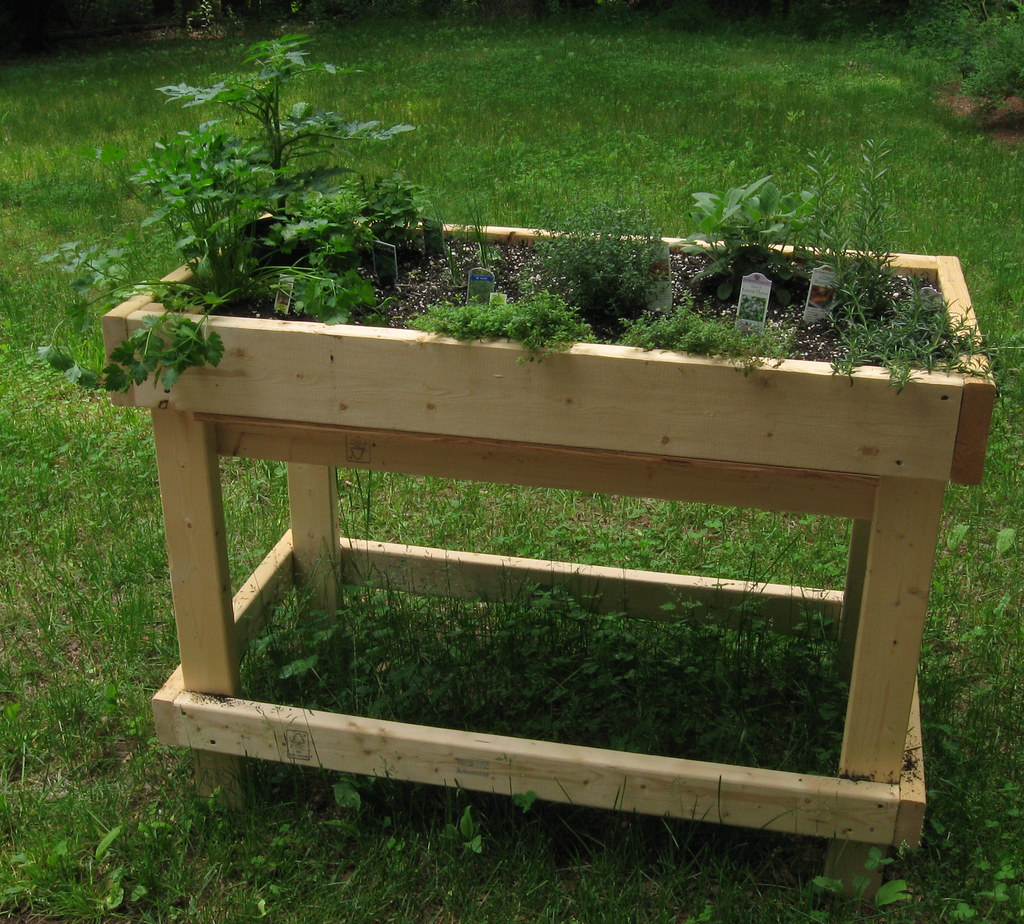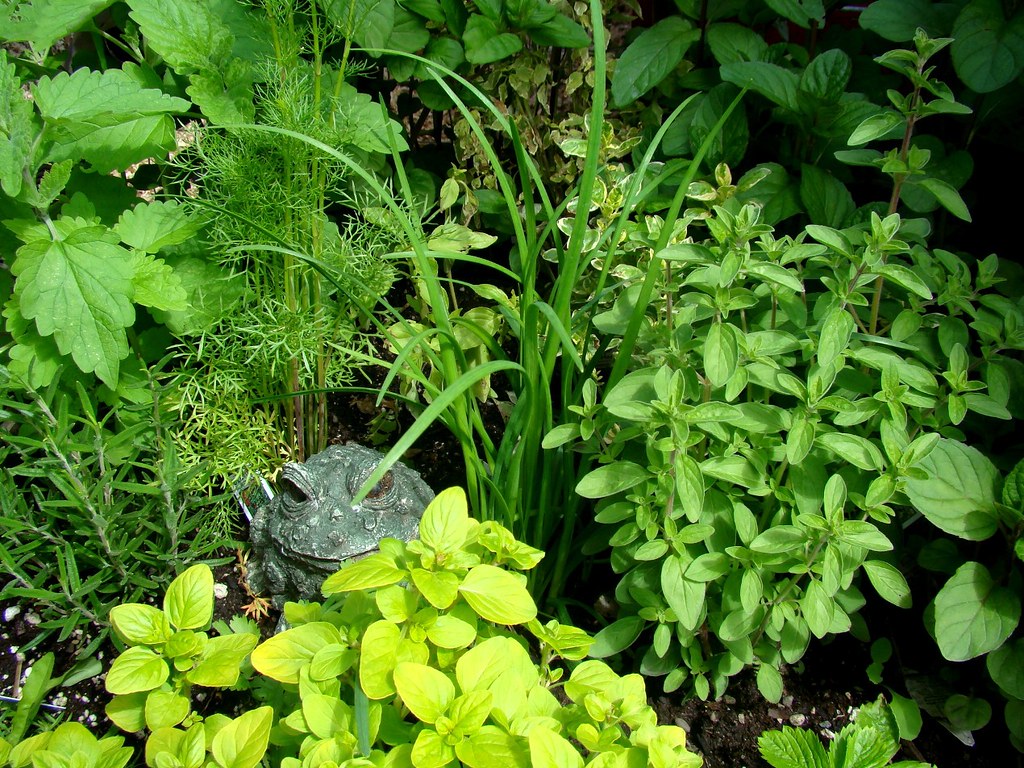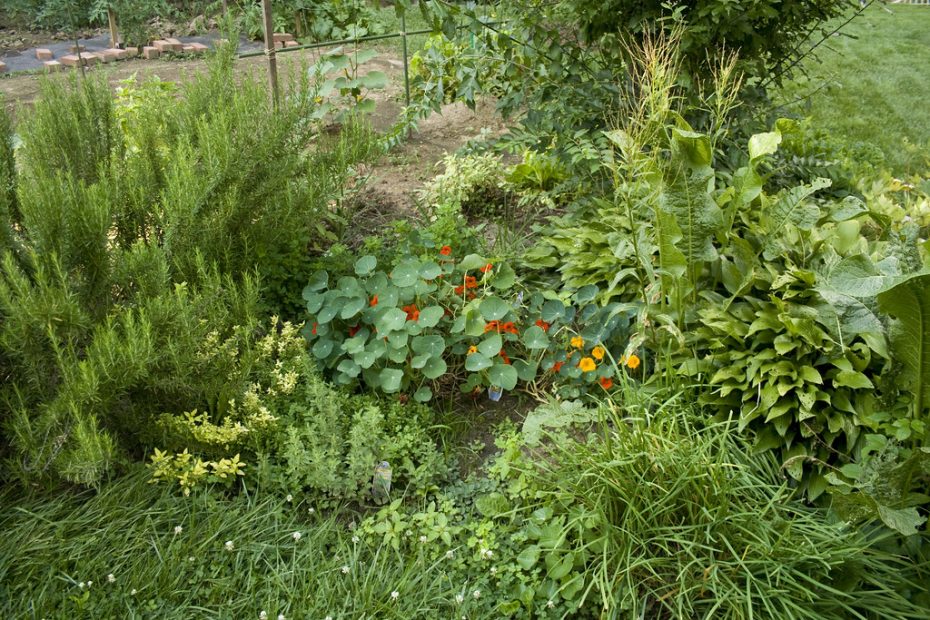Growing herbs is not only rewarding visually but also adds a lot of flavor to your cooking. When I first started out I simply grew all of my herbs inside but why not also have them outside I thought. Can you grow herbs outside?
You can grow most herbs outside. The herbs that grow best outdoors are basil, chives, coriander, dill, fennel, mint, parsley, and tarragon. The key to successful outdoor growing is choosing the right starting date, typically after the last frost.
Don’t worry! We’ll go over when exactly to plant each herb in much more detail later on. First, let’s look at how well herbs actually grow outside and which herbs you could consider planting. I’ll also discuss if you can plant supermarket outside or if it’s better to raise them from seeds.
Do herbs grow well outside?
Most herbs grow well outside. However, some herbs will grow better or worse depending on the climate zone you live in. Herbs like mint and basil will grow much better outside in warmer climates while dill, coriander, and chives are also content with cloudy skies and rain.
Thus, whether herbs grow well outside also depends on the amount of sunlight they will get. To check how much sunlight your herb needs click here to read my guide to herbs & sunlight.
Outside vs. Inside
When planting herbs outside there are some key difference to be aware of in contrast with indoor herb growing. One of the most obvious and important factors is the exposure to environmental variability such as rain and temperature.

Here are the most important factors to consider when planting your herbs outside:
- Water: Watering outside can be inconsistent and vary dramatically by region. Make sure the herb you are planning to grow outside is native to your area and climate or you will have to put in a lot of extra effort to take care of the plant.
- Temperature: The same goes for temperature. There are some herbs that thrive in warm areas with low humidity while others will slowly die. Check out this amazing geographical herbal map I found!
- Soil: The texture of the soil can not only vary by region but also by property. Making sure you have loose nutritious soil available for your outside herb garden is a must. Herbs don’t do well in soil consisting of too much clay or infertile dirt.
Once you have checked these 3 factors it’s time to consider which herbs to would like to plant. Since there are dozens of herbs available I’ve narrowed the selection down to 8 herbs that grow best outside.
Which herbs grow best outdoors?
The best herbs to grow outside are basil, chives, coriander, dill, fennel, mint, parsley, and tarragon. Although almost all herbs can be successfully grown outside these herbs tend to do best.
This is because they require a less complex set of conditions to thrive. In other words: they are more resilient than other delicate herbs like rosemary or oregano.

Let’s look at the best herbs to grow outside in a bit more detail:
- Basil (Ocimium basilicum): Basil is a fantastic herb to grow in warmer climates with lots of sun. While it can also grow in milder environments its leaves will not develop as fully and flavorful.
- Chives (Allium schoenoprasum): Chives are fairly simple to grow outside with little maintenance required. Thriving in almost any outdoor condition they can be grown in most moderate to warm climates.
- Coriander (Corinadrum sativum): Coriander is native to central and northern Europe and – as a result – can handle lower temperatures and more moisture.
- Dill (Anethum graveolens): Like coriander, dill has grown accustomed to less light and more rain. However, this herb will also be able to tolerate full sun for 8-10 hours per day.
- Fennel (Foeniculum vulgare): Fennel is an all-rounder. It can grow well outdoors in places like Illinois, Montana, or New York but may also do well in your Oklahoma herb garden.
- Mint (Mentha spicata): Mint prefers the somewhat warmer coastal climates of Italy, Turkey, and Southern California. It can have the additional benefit of keeping squirrels and rabbits from eating your herbs.
- Parsley (Petroselinum crispum): Parsley prefers slightly milder climates with moderate sun exposure.
- Tarragon (Artemisia dracunculus): Tarragon will grow better in outdoor environments with lots of sunlight and not too much rain.
Now that we have an overview of the best herbs to plant outside, let’s actually look at one of the most crucial questions: when is the right time to start planting your outdoor herbs?
When can I start planting herbs outside?
You can start planting herbs outside between March to May each year. The exact timing depends on the herb and the last frost date in your region. Some herbs such as chives, dill, and parsley can be planted outside even before the last frost while other herbs such as basil, coriander, fennel, mint, and tarragon can only be planted after the last frost.
Herbs that can be planted before the last frost are
- Chives
- Dill
- Parsley
Herbs that can be planted after the last frost are
- Basil
- Coriander
- Fennel
- Mint
- Tarragon
While the above is a rough separation of before and after frost herbs, we can even get more precise to find the optimal time to start planting your herbs outside. This ideal time is not arbitrary but actually reflects the plants’ lifecycle in nature.
When annual or perennial herbs spread their seeds in fall/winter they tend to develop at different times the following year depending on the last frost date. Here’s when to plant your herb seeds outside:
| Herb | Weeks after/before last frost |
| Basil | 1 week after |
| Chives | 2 weeks before |
| Coriander | 1 week after |
| Dill | 4 weeks before |
| Fennel | 1 week after |
| Mint | 1 week after |
| Parsley | 2 weeks before |
| Tarragon | 1 week after |
Now that we know which herbs can be planted before or after the last frost date, we’ll need to figure out when that date typically occurs in each region. Lucky for us the U.S. Department of Agriculture has come up with a handy method that lets us determine the climate zone we are in: The USDA Hardiness Zone Method.

This map conveniently separated the entire continental United States into about 8 distinct zones which different outdoor gardening requirements and varying levels of frost. Depending on the zone you live in we can then determine the average last frost date:
| Zone | Last Frost Date | First Frost Date |
| 1 | May 22 – June 4 | August 25-31 |
| 2 | May 15-22 | September 1-8 |
| 3 | May 1-16 | September 8-15 |
| 4 | April 24 – May 12 | September 21 – October 7 |
| 5 | April 7-30 | October 13 – October 21 |
| 6 | April 1-21 | October 17-31 |
| 7 | March 22 – April 3 | October 29 – November 15 |
| 8 | March 13-28 | November 7-28 |
| 9 | February 6-28 | November 25 – December 13 |
| 10-13 | No freeze | No freeze |
Now simply do the following steps to determine when to plant your herbs outside:
- Find your hardiness zone
- Determine the average last frost date
- Subtract or add weeks for each herb
For instance, let’s assume you live in Ohio and want to plant basil outside. Your zone will be 6 with an average last frost date of April 1-21. Basil can be planted one week after the last frost date so a safe bet would be to start sowing basil seeds on April 28th.
Can you plant supermarket herbs outside?
You can successfully plant supermarket herbs outside by splitting up the plant, giving the roots enough space to grow and provide them with loose and fertile soil. In fact, planting full-grown supermarket herbs is easier than rearing them from seedlings (but not as satisfying).
For a more detailed explanation on planting supermarket herbs and the mistakes to avoid to have your plants thrive check out this article, I wrote just a few weeks back (“Can you plant supermarket herbs?“).
Conclusion
Planting herbs outside requires a little more preparation than indoor herb growing but can be done successfully in a few steps. The key is to figure out which herb you can grow where. Make sure your herb is compatible with your climate zone, figure out your last frost date, and plant away.
Living in zone 5 I have personally planted chives, parsley, coriander, and some basil. As you continue to plant herbs outside over the years you will not only see quicker results but also become a better botanist in the process. So, I guess what I’m trying to say is: enjoy the process 😉
“secret summer herb garden” by woodleywonderworks is licensed under CC BY 2.0; “Raised Herb Bed” by Dan Malec is licensed under CC BY 2.0; “herb garden” by Amanda Kae’s Photoz is licensed under CC BY 2.0
- Are Herbs Perennial? - January 29, 2021
- Can Herbs Survive Winter? - January 28, 2021
- Can Dogs Eat Herbs? - January 27, 2021
